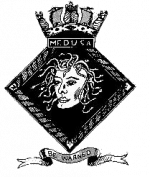Medusa at D-Day
Immediately before D-Day, Medusa was in Portland harbour with the vast fleet of vessels getting ready for the invasion. Her role as a navigational leader meant she, together with ML1383, were the first to leave.
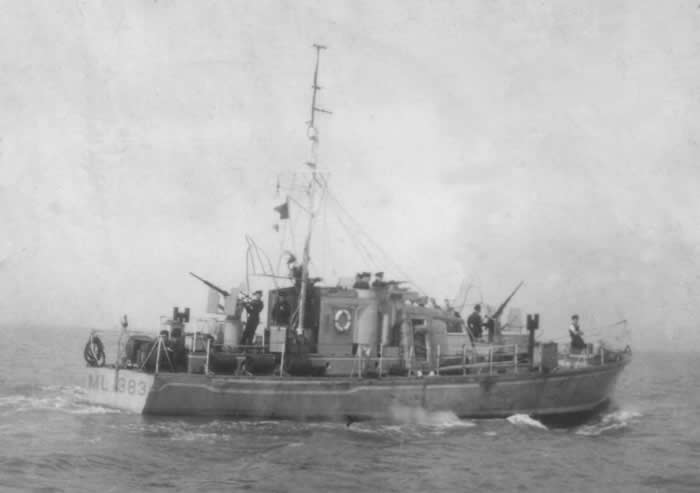
ML1383, Medusa’s partner for Omaha
Medusa had to be on station by 1800 on 4 June (the invasion originally planned for 5th June). From Portland it was approximately 90 miles to her designated position which meant a passage of 12 hours. No logs survive but we can deduce that she left Portland by 0500 4 June (based on 8 knots plus some contingency). She was on her way in atrocious weather by the time the order to postpone D Day was given. She turned back and took shelter in Weymouth Bay for 24 hours before proceeding again.
Her role was to go to a precise spot on the edge of the German minefield and stay there as a beacon for the minesweepers to cut through the minefield and then mark the entrance to the swept channel for the invading force. Medusa carried the most advanced navigation equipment available (QM, Decca and QH Gee) to help her locate the spot. This was so secret that she was fitted with demolition charges to be detonated if capture was likely. She would know when she was in the right place as it was marked by an ultrasonic beacon laid on the seabed by Fairlile Bs ML147, ML151 and ML198 (Operation Enthrone). To establish the correct position they started at the Nab tower and proceeded South running out a thin wire behind them to measure distance. This took them to the position for Channel 1 (Utah beach) at 50 05N 000 58W. At this point the first beacon was laid and then they turned east to lay the next 9. Positions were checked with QH (Gee).
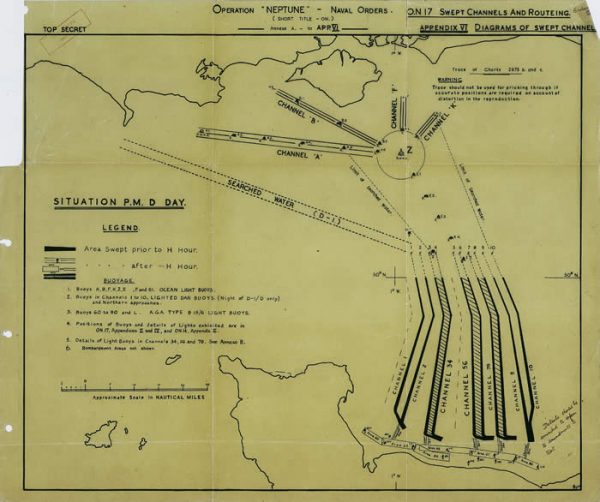
The position for No 4 channel was 50 degrees 05 minutes North, 000 degrees 44 minutes West
From the Operational Orders for D-Day:
“HDML 1383 and HDML 1387 are designated the Channel Identification Group. They are to proceed from Portland independently in time to reach Approach Channels 3 and 4 respectively by H Hour – 13. The approaches are marked by FH 830 acoustic beacons previously laid by ML 147, ML 151 and ML 198 Operation Enthrone
HDML 1383 and HDML 1387 are to transmit 3 or 4 as appropriate at 30 second intervals on a shielded blue signal lamp through the night. By day they are to fly a large international code numeral flag. HDML 1383 and HDML 1387 are to remain on station until 2300 on D-Day.”
The weather was better than the previous day but still bad with F5/6 winds and strong tides. Medusa had to motor continuously to hold position. Medusa had a ringside seat as the invasion force came through. One of the first vessels they saw was HMS Glasgow then USS Texas.
On completion of her role at 2300 on 6 June, her orders were to head back to Portsmouth. Its unclear if she did, but it would have been brief as she was back by the 10th positioned just off Omaha beach. Crew testimony talks of her going direct in to the beaches post the marking role.
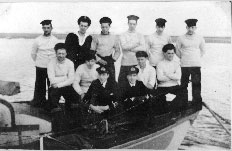
Medusa Crew
First hand accounts from crew members are harrowing, a story of an aircraft crashing close to them, seeing the water off the beaches black with corpses and of ships damaged and sunk.
The logbook of US SC-1354 (a sub chaser, 110 feet long and similar to a Fairmile B) records that at 1717 on 10 June “HMS ML1387 drifted into our bow. No damage resulted”. This was also recounted by a Medusa crewmember who recalled the US vessel drifting into them!
In the days after D Day, Medusa made several crossings of the channel escorting convoys and delivering instructions to major vessels. There are various stories from crew members which cant be fitted to the timeline at present but more research may do. At one point they collected an admiral from a south coast port and took him to a major warship. Medusa engaged an enemy aircraft on passage and the admiral complained of the noise and forbade them to use the after Oerlikon again as it was above the wardroom and he was resting. Another story talks of dropping charges to discourage enemy activity and this bringing a one man submarine to the surface; this suggests Medusa was part of the the “Trout” defensive line but no definitive record exists.
On 19/20 June a massive storm came though causing huge damage including wrecking Mulberry A at Omaha. Medusa had just completed escorting a convoy to the blockship harbour at Courseulles (Juno Beach) in bad weather. She attempted to put to sea to avoid the drifting barges and other craft but holed the Asdic dome on a rock in the western entrance. She reached Portsmouth for drydocking with both power and hand pumps being used to keep her afloat. She was repaired and returned to convoy escort duties. An ASDIC dome was dredged up during the dredging for the Queen Elizabeth carrier in 2018, it is quite possible that it was Medusa’s.
Post D Day, Maurice Liddiard was debriefed on each aspect of the operation. The extract below shows how the navigation systems, QH and QM performed as well as the ultrasonic beacon FH830.
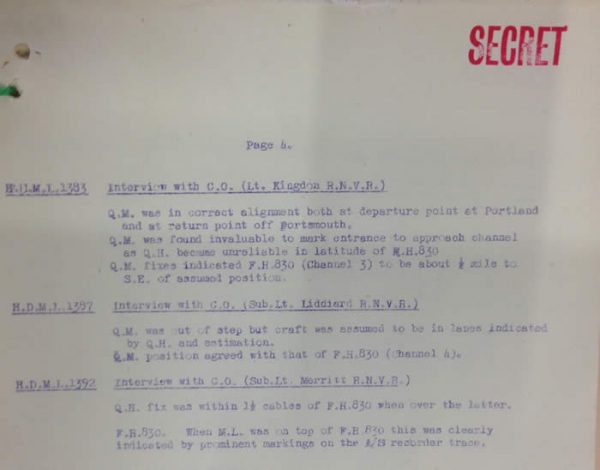
Decorations
For good service distributing instructions in the assault anchorage after the first landings in Normandy
- MID TSLt Arthur Maurice Liddiard RNVR
Birthday Honours 1945
- MID LSea Charles George Edwards LT/JX222800
Wind up of the war in Europe (Gazette Date 11/12/45)
- MID LSea William Victor Walpole LT/JX219689
Based on HMS Hornet 2/9/44 – 30/11/44
Based on HMS Wildfire 1/12/44 – 31/8/45
